FLOPPY DISK WORLD
Guidelines for finding keyboard accessories, instrument parts and useful ideas for keyboard players.
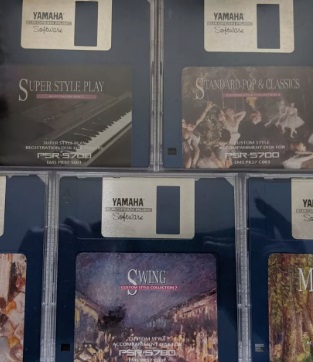
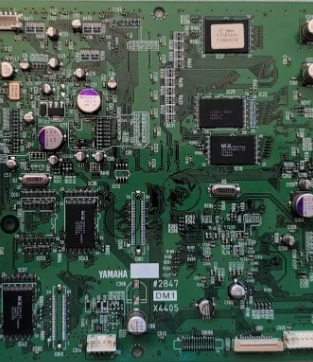
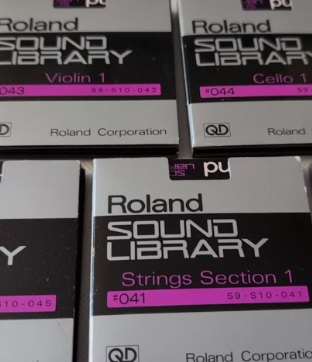
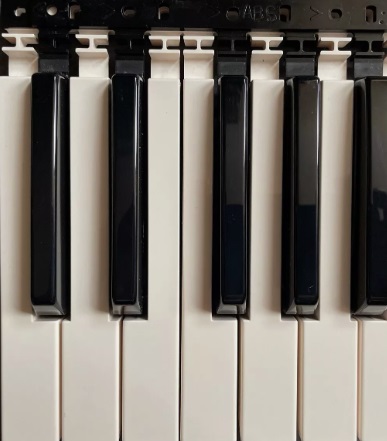
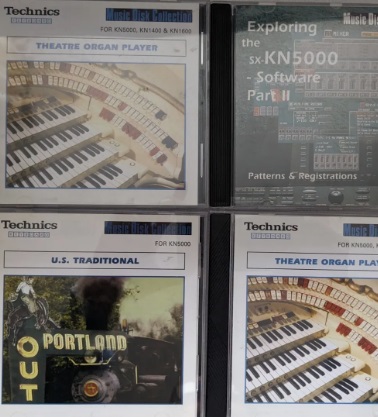
Welcome to Floppy Disk World
Discover a wide range of Retro Midi Song Files on Floppy Disk, Accompaniment Floppy Disk Styles, Registration Floppy Disks for Keyboard Players. Yamaha, Roland, Korg, Technics Keyboards & Keyboard Instrument Parts. Contemporary & Vintage Sheet Music Books. Amiga & Computer Gaming Floppy Disks.
Here we take you back to the 1980s and 1990s, to a special time when the world of keyboards & synthesizers operated with floppy disks.
Like…the Yamaha PSR 740 & 640, Yamaha PSR 9000 & 9000 Pro 76 keys, Yamaha Tyros1, Yamaha SY85 & SY99, Korg PA Series, Technics KN Series, Roland G Series, and many more…
These legendary keyboards were built to last. Renowned for their exceptional quality and professional specifications, they are often literally linked to the soundtrack of our lives!
Whether you are interested in reminiscing, reliving an experience, creating more memories or trying something new; we would like to help you reach your goal. (Laszlo Fitos)

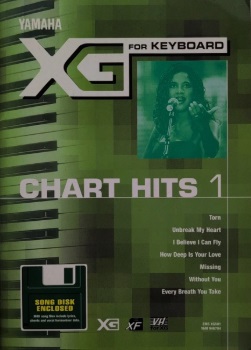
★★★★★
‘If I could give 10 stars I would. Very very thoughtful seller, went the extra mile and really made an impression on me. The kids I work with are very excited to work on this project and you’ve made it much easier- incredible customer service. Buy from this seller- you will NOT regret it! Super value, super packaging (those disks were going nowhere!) and incredibly speedy postage. Exactly as described, very very happy customer.’

R. T.
/
eBay customer
Frequently Asked Questions & Answers About Retro Keyboards
What are accompaniment style files ?
Most of the arranger keyboards have built-in styles that are included with that keyboard. However you can add more available new styles which are not yet on your keyboard. These floppy disk styles can be loaded and then saved to the USER area or to a HARD DRIVE. You can play them as you turn the Accompaniment button/function ON. Play the chords on the left hand side of the keyboard and the styles will sound along with your chord playing. You can mute or edit each individual part of the style, i.e. – if you just want to hear the drum or bass part of it.
What are registration files?
Registration or performance files can be used to set up your keyboard to play particular songs. This can be used by a performer when playing a gig. They are not midi song files (backing tracks). You normally load the files from the floppy disk into your keyboard’s Registration Memory Banks, and if saved later you find them in there.
What are midi song files?
MIDI songs are collections of data that tell your keyboard what to play. They come in the form of digital files (usually with the suffix .MID) that you can play with your instrument usually loading the floppy disk into your keyboard’s SONG MENU. Midi song files, can be used as backing tracks for any musicians, singers and bands seeking top-notch sound for live performances and recordings. The midi sequences can be customised with midi players, synthesizer keyboards or music editing softwares to your desired musical options, when you need MIDI File backing tracks. Midi songs floppy disk are compatible with Yamaha PSR, Tyros1, Technics, Roland, Korg, Akai, Casio and any other type of keyboard synthesizers, midi players, sequencers with built in 2DD and 2HD floppy disk drive.
What are the differences between 720KB and 1.44MB Floppy Disks?
The floppy disk drive stores data on a thin flexible plastic disk coated on one or both sides with a magnetic film. Although the disk itself is floppy, and early ones were enclosed in flimsy cardboard covers, most disks are nowadays enclosed in a stiff plastic cover. The cover has a metal shutter which slides back automatically when the disk is inserted in the drive to expose part of the disk surface to the magnetic head.
1.44Mb floppies have two wholes, an extra cut-out at the ‘user’ end, similar to and opposite side to the write-protect tab, but without the user-settable sliding cover (that is: on the near right hand side looking at the top as you insert it into the drive). The purpose of this was to allow a micro-switch or optical sensor in the drive to detect automatically whether a floppy was 720Kb or 1.44Mb. Usually older keyboard synthesizers use the 2DD 720kb and newer ones (late 90’s early 2000’s) use the 2 HD type disks.
What type of floppy disk to use for my keyboard model?
Yamaha PSR 1700, 2700, 6000, 5700 & 620 plays A/B Intro, Fill and End variations
Only 3.5″ 2DD type floppy disks compatible
Yamaha PSR 730/630 plays A/B Intro, Fill and End variations
3.5″ 2DD and 2HD type floppy disks compatible
Yamaha PSR4000, 7000 & 8000 plays A/B Intro, Fill and End variations
3.5″ 2DD and 2HD type floppy disks compatible
Yamaha PSR 550 plays A/B Intro, Fill and End variations
3.5″ 2DD and 2HD type floppy disks compatible
Yamaha PSR 740/640 plays A/B intro A/B/C/D Fill and A/B End variations
3.5″ 2DD and 2HD type floppy disks compatible
Yamaha PSR 2000/1000 & 2100/1100 plays A/B intro A/B/C/D Fill and A/B End variations 3.5″ 2DD and 2HD type floppy disks compatibles
Yamaha PSR 9000 & 9000 Pro plays A/B/C Intro A/B/C/D Fill and A/B/C End variations 3.5″ 2DD and 2HD type floppy disks compatible
Yamaha Tyros1 plays A/B/C Intro A/B/C/D Fill and A/B/C End variations 3.5″ 2DD and 2HD type floppy disks compatible
Korg PA50 plays A/B/C Intro A/B/C/D Fill and A/B/C End variations 3.5″ 2DD and 2HD type floppy disks compatible
Korg PA 1X & Pro plays A/B/C Intro A/B/C/D Fill and A/B/C End variations 3.5″ 2DD and 2HD type floppy disks compatible
Interesting Facts About Floppy Disks
Surprisingly those airplanes were built over twenty years ago when floppy disks were still a mainstream way of storing digital media. Navigational data and other avionics could be easily moved from one plane to another using the disks. Since some of those planes are still around, so is the need for disks compatible with their hardware. Fewer than 20 Boeing 747-200s remain in service worldwide, and only in cargo or military configurations. The US Air Force operates six, two of them as Air Force One. It’s unclear whether they still use floppy disks, too, but the US military employed the even-older 8-inch floppy disks in its nuclear arsenal until 2019. Several other types of commercial aircraft also use floppy disks, including newer variants of the 747 and the 767, older Airbus A320s, and some business jets such as Gulfstreams built until the 1990s.
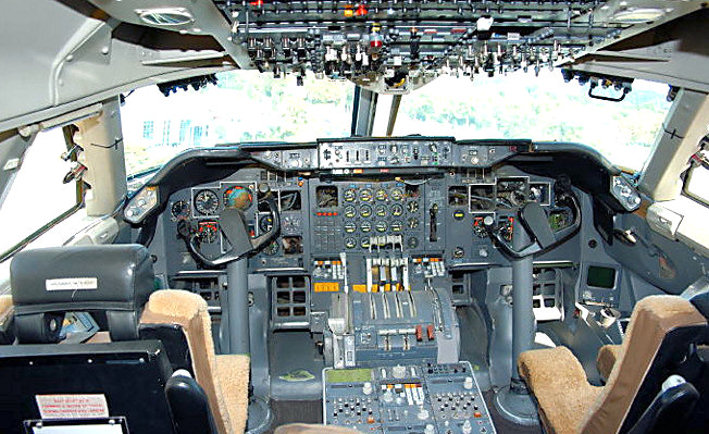
Various legacy industrial and government systems around the world still use floppy disks. Even some city transport systems run on them. And while these users are slowly dying out, a handful cling on, despite the fact that the last brand new floppy disk manufactured by Sony was back in 2011. No-one makes them anymore, meaning there is a finite number of floppy disks in the world – a scattered resource that is gradually dwindling. One day, they might disappear entirely. But not yet.
Based in San Francisco, the Muni Metro light railway, which launched in 1980, won’t start up each morning unless the staff in charge pick up a floppy disk and slip it into the computer that controls the railway’s Automatic Train Control System, or ATCS. “The computer has to be told what it’s supposed to do every day,” explains a spokesman for the San Francisco Municipal Transport Agency (SFMTA). “Without a hard drive, there is nowhere to install software on a permanent basis.”
List of 10 Greatest Retro Arranger Keyboards
No 1. Yamaha PSR 9000 Pro
The Yamaha PSR 9000 Pro is a legendary keyboard with an elegant appearance. The keys feel great to play and response possibly the best Yamaha have ever put into an arranger keyboard. The 9000 Pro is based on the PSR9000 keyboard that has a built-in speaker system. The PSR 9000 Pro has no built-in speakers similar to professional synthesizer keyboards. The sound quality is superb, amazing and still can challenge today’s contemporary keyboard’s quality. For example the PSR 9000 Pro has vocal choir voices which no other PSR keyboard has, you would only find this again in the Tyros 4, 5 and Genos. Not to mention the sampling capability with the PSR 9000 Pro there are no limits for your musical creativity all in one hand. No other keyboards in this category could give you so many options: for sampling you would need another synthesizer module, the 76 weighted keys, expandable memory options, plug – in custom voice boards, style creating and voice editing, and a large LCD display.
Specifications of Yamaha PSR 9000 Pro Arranger Keyboard
76 key synth weighted with touch response (initial/after)
Polyphony: 126 notes Max Voice: 848 presets (342 voices + 80 XG voices + 24 drum kits + 2SFX kits) 32 programmable custom voices, 10 presets + 10 user organ flutes (9footages using modelling technology)
Plug in system: 2 slots Edit control: plug-In custom voice creator supported boards: PLG100-dx, PL100-vl, PLG150-an PLG150-PF, PLG150-dx, PLG150-vl, PLG100-xg
Sampling Quality: 16 bit 44.1khz mono file import: AIFF, WAV edit control: resampling, loop point, Normalise, volume, tune.
Effect: Reverb 29 presets=3 users, chorus 25 presets + 3 user, DSP for style and song 163 presets, 4 x DSP for voices 164 preset + 10 user, DSP for mic 84 presets + 10 user, vocal harmony 59 presets 10 user, 3 note polyphony, Harmony/echo 17 presets, m
Auto Accompaniment: 125 preset styles + 87 factory-set flash styles max1.8 Mb + disk direct play (style disk bundled with 66 styles) 14 sections x 8 part, sync start, sync stop.
Recording: real-time record, step rec., event edit, full parameter edit, patt
One Touch Setting: 4 per style (fully programmable)
Music Database: 616 (fully programmable)
Real-time controllers: pitch bend wheel, modulation wheel
Registration memory: 512 ( 8 switches x 63 Banks), freeze function
Multi pad: 4 pads x 60 banks Recording: real-time rec, step rec, event edit
Song: Disk direct playback with ultra quick start function, lyric display, quick rec, multi track rec, step rec, chord step rec, event edit, 16 tracks, approx 36,000 notes max
Display: Backlit graphic LCD 240×320 dots with contrast Language: English, German, French, Spanish, Italian
Floppy disk drive: 3.5″ 2HD/2DD with disk cache
SCSI Format: SCSI2: hard disk, CD-ROM, Zip, Jaz, MO (8GB max, per device)
Video out: NTSC, PAL PC
Keyboard: PC/AT
Standard Gooseneck Lamp Sockets: 2 sockets with dimmer (4 pin XLR connector DC 12v/5w max, 12 inches or shorter in length)
Power consumption: 220/240v 47w
Dimensions and weight: 1,269×407.5x140mm, 20.5 Kg
Bundled software: disk styles, factory data backup disk, plug in custom voice disk
Optional accessories: foot switch FC5, MIDI foot controller MFC10, Foot volume FC7, headphones, keyboard stand LG100, internal hard disk (2.5″ IDE, 8gb max)
No 2. Yamaha PSR 640/740
Incredible Music Styles
The PSR 740 and 640 contain 160 fully arranged music styles, including specially designed Pianist Styles, to backup your musical performance. Each style has its own unique Intro, Main A/B/C/D variations, and Ending, as well as four fill-in patterns for added musical expression. You can change the instrument part settings of any music style, or even create your own custom styles. The PSR740 also features “Count Intro” and “Simple Ending” to enhance your musical performance.
Direct Access
Direct Access eliminates navigating through multiple menus. Press any function button while holding down the Direct Access button, and the keyboard will instantly jump to the screen associated with that function. Convenient for quickly setting voice and sequencer parameters, etc.
No 3. Korg PA 50
For many years, the Korg PA50 has been the most popular member of the Korg Pa family. Its amazing sound, ease of use, and affordable price point has proved a winning combination.
As a songwriting station or as a back-up band, you can be sure the Pa50’s performance will be truly musical. The Pa50 combines enhanced sequencing functions, powerful performance features, custom backlit LCD, comprehensive arranging tools and impeccable sound quality.
Based on the TRITON synth engine the Pa50 sound quality is second to none! Included with its 660 editable sound programs is a set of very expressive solo instruments, sampled with a natural vibrato. Four studio-quality effect processors are available and feature 89 different effect types. Four assignable pads, an assignable footswitch, the joystick, sync start, fade in and out, tap tempo, accompaniment reset and other front panel functions are available at your fingertips.
Each of the 304 editable styles provides up to eight accompaniment parts – drums, bass, percussion and more – that respond interactively with your playing. Eight parts, four variations, two fills, two intros and two endings per style provide all you need to create a natural-sounding performance. In addition to the eight parts that comprise a style, up to four sounds are available on the keyboard as real-time parts. The Pa50 can also store 160 user defined performance settings, each instantly recalling the style, sounds, effects, panning, transposition and other settings assigned to each part.
In addition to traditional real-time and step-time sequencing, the Pa50 also features backing sequencer, which can capture up to eight tracks of style accompaniment and up to eight tracks of real time playing in a single pass. The PA50 is GM and SMF compatible and in performance, nothing beats the revolutionary XDS dual sequencer. Lyrics embedded in SMF sequences are shown in the display.
The Pa50 features two dual-cone speakers in a reflex cabinet and twin 15 Watt amplifiers.
Korg’s popular PA50 professional arranger brought up to date with SD data card storage.
No 4. Korg PA 1X Pro
The first thing you’ll notice about the Korg PA1X Pro is the huge 240 x 320 full color touch view display, taking Korg’s intuitive access of multiple parameters to new heights. Next, the sleek aluminum panel and 76 semi-weighted keys (with aftertouch) will catch your eye. Eight assignable sliders, four assignable switches, a joystick and two fixed function faders are all designed to put the amazing power of the Korg Pa1X Pro at your fingertips. Hidden inside, the hard drive can store all your sound, song, sample and performance data for easy recall.
The Korg Pa1X Pro is the first Korg product based on RX Technology, designed to produce a detailed, sophisticated natural sound. The Pa1X Pro delivers a generous 62 notes of polyphony, 760 Sounds, plus another 512 you can program yourself. Add to that 48 preset drum kits and 128 programmable drum kits! Sweeten the sound using the four Master Effects (featuring 90 effect types), plus a set of Vocal Effects borrowed from the legendary TC-Helicon.
The Korg Pa1X Pro is also an accomplished sampler, able to read .WAV, AIFF, Korg and AKAI samples/multisamples. Sampled sounds can be sliced to create new grooves and kits, assigned to Sounds, or filtered, modified and processed by the internal effects. Standard sample memory is 16MB, expandable to 32 MB.
Keyboard
76 semi-weighted keys, with velocity and aftertouch
System
KORG OPOS (Objective Portable Operating System) and RX (Real eXperience) Technology – Multitasking, Load-While-Play feature – SSD (Solid State Disk) resident – Operative System upgradable from floppy disk
Tone Generator
KORG HI (Hyper Integrated) – 62 voices, 62 oscillators – Filters with resonance
Effects
4 stereo digital multi-effect processors (with 89 effect types each, plus VOCODER) – Voice Processor: Voice Technology by TC-Helicon – Four-part harmonizer – Reverb, Delay, Compressor, EQ – Pitch Correction and Voice Modeling available as option
Sounds – Drum Kits
Factory: >800, including a Stereo Piano and GM Level 2 compatible Sounds, 48 Drum Kits – User area: 256 Sounds, 64 Drum Kits – Digital Drawbars: 8 Footages – Realtime control: Assignable Sliders – Full editing of Sounds and Drum Kits – Sampling: Record, Edit, Time Slice, Load/Import of Korg, Wav, Aiff and Akai files – PCM RAM Memory: 16MB standard, expandable up to 32MB with an optional 16MB SIMM module – PCM ROM Expansion: 2 slots available, for up to 32MB of additional samples (up to 512 extra Sounds and 128 Drum Kits)
Realtime Tracks
Four Keyboard tracks (Upper 1, 2, 3, Lower) – 4 Pad tracks
Performances/STS
320 Realtime Performance locations – STS: Memorize Realtime tracks and Voice Processor settings, up to 4 x 608 Styles, up to 4 x SongBook entries
Styles
More than 450 preloaded Styles, SSD-resident, freely reconfigurable – Up to 608 available Style locations – Eight Style tracks, 4 Single Touch Settings and one Style Performance per Style – Direct Floppy Disk (up to 96 Styles) and Direct Hard Disk (up to 288 Styles) functions – Compatible with old “i-Series” Style and Pa80/60 series Style, Performance, Program, Song – Style Record with Step Record, Track and Event Edit functions – Up to 96 User Style locations – Style controls: 4 Variations, 2 Fills, 2 Intros, 2 Endings, Intro 3/Count In, Fill 3/Break, Synchro Start/Stop, Tap Tempo/Reset, Fade In/Out, Bass Inversion, Manual Bass, Tempo Lock, Memory, Accompaniment Volume, Accompaniment Mute, Drum Mapping, Snare & Kick Designation, Single Touch
Song Play
Patented XDS Crossfade Dual Sequencer player – 2 Sequencers with separate Select, Start/Stop, Pause, << (Rewind) and >> (Fast Forward) controls – Balance control – Lyrics data can be displayed on-screen, or on an external video monitor – Jukebox function – SMF Direct Player (formats 0 and 1) – Reads Audio CDs and MP3 files (both with option installed)
Sequencer
Quick Record (Backing Sequence), Multitrack and Step Record functions – Full-featured sequencer – 16 tracks – Up to 200,000 events – SMF native format – MP3 Player/Recorder MP3 Player/Recorder (optional EXBP-MP3 expansion board) – CD Audio Player/Writer (optional KORG CDRW-1 drive – Writing available starting from O.s. 2.0)
SongBook
Fully programmable music database, based on Styles, SMF, Karaoke and Mp3 files (Mp3 player optional) with automatic selection of Style Play and Song Play modes – User-definable custom lists – Filtering options
Help
Hypertextual, contextual Help system – Multilingual starting from O.s. ver. 1.5
Multi Pad
4 Assignable Pads + Stop button
General controls
Master Volume, Ensemble, Octave Transpose, Master Transpose, Split Point, Style Change, Tracks Volume, Quarter Tone and Arabic Scale memorized inside Performance/STS – Pedals: Damper, Assignable (continuous, footswitch), EC5 – Realtime controllers: Joystick (pitch + modulation), Assignable Sliders, Assignable Switches, Pads, Dial
Analog Outputs
2 x Main (Left/Mono, Right), 2 Sub (1, 2), Headphone
Digital Output 1 x S/PDIF coaxial connection (mirroring Main Stereo Outputs)
Analog Inputs
2 x Line In, 1 x Mic In with Gain control
MIDI
2 x IN, 2 x OUT (toggle as THRU ports) – Individual track assignment – Auto-setup function (MIDI Setup)
USB
Connector Type B (Slave) based over USB ver. 1.1
Data storage
2DD-2HD Floppy Disk Drive (MS-DOS compatible) – 2.5″ ATA Hard Disk Drive – Optional CD-RW (KORG CDRW-1)
Display
320 x 240 pixels, Color TouchView graphic touch screen
Power Supply
Universal 100 ~ 240V AC power supply
Power Consumption
35 W
Dimensions
1330 mm (W) x 366 mm (D) x 136 mm (H) (without music stand)
52.36″ (W) x 14.4″ (D) x 5.35″ (H) (without music stand)
Weight
19.5 kg / 44.99 lbs
Accessories
User’s Manual, AC Power Cable, Music Stand, CDRW installation kit
No 5. Yamaha Tyros 1
The Yamaha Tyros 1 keyboard sets a high standard in sound and performance with Yamaha’s new MegaVoice Technology.
MegaVoice instruments reproduce the nuances of real instruments, from the “strum” of a guitar to the sound of a pick scratching the string. Music Score and Guide Mode displays the music as you play, and waits for you to find the correct notes.
USB computer connectivity makes it easy to connect to a PC. An extra-large, full colour LCD display shows notation, lyrics, and more in incredible detail. With over 1,100 sounds and GM2, XG, GS and SFF compatibility, the TYROS will fit into any studio environment. The TYROS is designed for any serious musician seeking the broadest musical palette. It is a truly fantastic keyboard.
Features of the Yamaha Tyros 1 Keyboard
MegaVoice Technology duplicates instrument behaviour
New design: colour VGA display, panel lights, clear Music rest
Vocal harmony & video out for live performance or karaoke
One Touch Setting and Music Finder provide instant professional sounds
Comprehensive music production: Mixing Console, Sound Creator, Style Creator and more
Dimensions and Weight:
Dimensions (W x H x D): 1140mm x 137mm x 428mm (44.9 x 5.4 x 16.8 inches)
Weight: 12.4 kg
No 6. Yamaha PSR 6000
The Yamaha PSR 6000 was released in 1994 however it was far advanced in its time. The PSR 6000 similar to the PSR 5700 has the accompaniment solo style function which makes these keyboards very special. The large LCD display, manual dials to adjust styles and voice levels, and the whole design of this keyboard would better fit into today’s arranger keyboards category.
128 Vibrant Voices with Dual and Split Modes
The Yamaha AWM tone generation system delivers a range of 128 vibrant voices that sparkle with realism. From acoustic piano to synthesizer.
Custom Voice Editing
If you need an original voice, the Custom Voice Edit mode will let you create it. Create a full set of 128 custom voices.
Versatile 8-track Sequencer
Sophisticated 8-track sequencer can be used as a complete composition tool, or to simply record ‘music-minus-one’. The sequencer records automatic accompaniment data as well as anything you play on the keyboard. It also lets you edit and refine recorded tracks with a comprehensive range of editing functions that make it easier to create a truly polished sound.
Digital Effects
23 digital reverb-based effects and 9 modulation type effects that can give your sound an extra measure of ambience and animation.
Disk Orchestra Collection and General MIDI Software Compatibility
Yamaha Disk Orchestra Collection disks will let you enjoy listening to automated performances or function as your ‘private music tutor’, allowing you to practice various parts of a piece while the others are played automatically. The PSR-6000 will also play Standard MIDI File.
Built-in Floppy Disk Drive
Custom voices, custom accompaniments, sequences, pad assignments, and complete panel setups can be saved to external 3.5′ floppy disks.
Auto Harmony
16 different Auto Harmony modes that can be used with its Auto Bass Chord features.
Versatile MIDI Functions
General MIDI Level 1 standard. Keyboard performance and sequencer playback are transmitted via the MIDI interface allowing broad control of external MIDI devices, and a bulk dump feature allows virtually all internal data to be transferred to another keyboard or data storage device. It can also function as a 16-channel multi-timbre tone generator for computer or sequencer-based MIDI music systems.
No 7. Roland G800
Roland’s introduction of the G800 Arranger Workstation in 1995 marked the company’s response to a home keyboard market in which the auto‑accompaniment keyboard was drawing steadily closer to the workstation synth in concept, appearance and technology. As such, the G800 was a departure from the approach of Roland’s E‑series home keyboard range, and it was designed to compete in the prestigious ‘flagship’ price range occupied by home keyboards from many of those competitors, such as the Solton MS60, Technics KN2000 and Yamaha PSR6000.
The G-800 Arranger Workstation is a great looking keyboard, 128 music styles are included, each with 12 possible variants (basic/advanced, original/variation, maj/min/7th). You can program your own music styles using the built-in sequencer. The 200*64 pixel display is easy to read. We all know the great quality of the tones of the Sound Canvas series. The G-800 tones are even better (the SC-88 Super Sound Canvas uses them too) and if the more than 600 new You can still use the old SC-55 and MT-32 tones too.
Roland G-800 Features:
76-note keyboard with weighted synthesizer action
64-voice polyphony, 32-part multitimbral
689 top-notch sounds, most derived from Roland’s professional synthesizers and samplers.
Sound editing
128 High-definition Music styles, each with four versions (basic, advanced, original, and variation), two intros, and two endings.
8 User styles
192 Performance memories.
Intelligent accompaniment, allowing syncopated chord changes with a professional sounding accompaniment.
Refined chord recognition
Three trigger modes
Dynamic arranger
Extra Bender controller
Three effects and two-band equalizer
Three-zone splits plus arranger zone
Intuitive user interface via 240×64 pixel display
Multitasking
Chord sequencer, allowing you to record the “changes” of an entire song before playing it, keeping your left hand free for pitch bend and modulation effects during performance.
MIDI file player/recorder.
No 8. Technics KN 7000
Technics SX KN7000 workstation keyboard is still widely used by discerning musicians today. All of the styles and sounds still hold up incredibly well, and the layout and features are still as intuitive as ever.
SOUNDS
PCM Samples on the Technics KN7000 give you breath-taking new sounds such as the new Baritone Sax Soloist, Brush Kit, and amazing Boys Vocal. There’s an accordion resister, Live Jazz Kit 2, Folk Guitar, and an incredible Jazz Organ soloist. There are well over 1000 sounds on the KN7000 and with a Wave Rom 33% bigger than the Technics KN6500 the sound quality has to be heard to be believed
ORGAN SAMPLES AND ORGAN TABS
Organ sounds include majestical classical presets, great tone wheel and rotary speaker samples, and a choice of 3 new organ tabs.
SPEAKER SYSTEM ON THE TECHNICS SX KN7000 WORKSTATION KEYBOARD
The Technics SX KN7000 workstation keyboard features a brilliant speaker design, which utilizes a rear-facing bass port delivering awesome bass power. The positioned tweeters give a degree of separation and sound projection that is superb.
VIDEO OUT
Have a karaoke session? Plug your telly into the back and the Technics SX KN7000 keyboard screen is projected onto your TV screen.
DIGITAL SIGNAL PROCESSING
You can apply enhanced DSP effects separately to Right1, Right2, Left, and APC parts, as well as global effects like chorus and reverb. The Technics KN7000 is equipped with both a global sound equalizer and a separate equalisation function for each part, you can create studio-like mixes with excellent sound quality.
LINKING TO A COMPUTER – MADE EASY
The Technics SX KN7000 workstation keyboard features a USB port, so you can link to a computer without having to reboot. The program provided will allow you to create midi files or even audio files that you can send to your friends via email or even create your own CDs. The included program that lets you do this, is simple. It’s not like the Cubase that allows you to knit spaghetti but appears complicated, it just does what you want it to do simply.
SD TECHNOLOGY
It is about time that Technics brought out a fast medium for storing loads of song registrations & rhythms, well as they say – “if a job is worth doing, its worth doing well”. The storage medium is a tiny memory card, the cost is massively cheaper than the hard drives that have been supplied in the past for Technics Keyboards. The speed – there’s nothing to touch it. How useful is it? , there are several sites on the internet that will allow you to access 100s of rhythms for Free. You can save audio files and pictures on the disc, link the audio files to your sequencer and the KN7000 will automatically set the keyboard to the correct tempo. It’s Huge what it can do, what’s more important, is that it will be useful to you.
No 9. Korg i4s
This is an amazing keyboard built in 1995.
Specification details : Type: Synth/ keyboard/ Synthesis Type: Digital Rompler additive Polyphony: Max: 16 or 32 Typical in use: 12 Multi-timbral (number of parts): 16 Controllers : 2 Effects : Number of FX units : 1 Number of different effects : 8 Drum Section : Number of Drum Kits : 3 Number of Drum sounds : 50 Keyboard : Number of Keys : 61 Can send on 16 simultaneous MIDI channels Responds to : velocity, after-touch Sounds can be split by : keyboard Memory : Patches : 100 Performances : 100 Inputs and Outputs : Number of Audio Outs (excluding Phones) : 2 Number of Audio Ins : 2 Number of MIDI Outs
No 10. – Roland E70
Positioned at the top of the line, the Roland E-70 is a 24 voices polyphony, high performance intelligent keyboard, with 128 sounds and 64 styles. The new LCD and the many buttons make the keyboard’s function easier to distinguish and select than ever before. Even if made with the entertainer in mind, the E-70 is ideal also for professional players and for those home musicians who can bring their talent into the spotlight after practising. The features of the E-70 enable fantastic versatility and musical expression and is great for composing, education and performance.
Features
61-note, polyphonic synthesizer with a dynamic keyboard
A new generation system with 24 notes polyphony, GS format and with TVF
40 characters for 2 lines LCD display with information and directions during play and programming
128 Tones, 256 via MIDI, 8 drum kits and various special effects
3 Internal speakers and 3 amplifiers of 2×7.5 watts of output for middle/high range and 15 watts for bass
